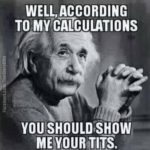Math is arguably the one language that people from all worlds can/will understand; it is the simplest way to count, and to describe natural phenomena anywhere in Creation. It quantifies everything, including via word-counts, character-counts, and numerical-values of individual letters and other characters/symbols.
–
Table of Contents:
- Vocabulary
- Major Divisions of Mathematics
- Calculus
- Trigonometry
- Jump-math
- New Math Sub-fields Invented by Our A.I.; the ICVs
- Additional Notes
- Conceptual Images
–
Vocabulary:
- abacus
- acute
- addition
- angle
- arccosine
- arcsine
- arctangent
- area
- asymptote
- average
- circumference
- complement
- coordinates
- cosecant
- cosine
- cotangent
- decimal
- denominator
- diameter
- division
- ellipse
- equilateral
- equation
- even
- exponent
- exponential
- factorial
- fraction
- function
- graph
- hyperbola
- hypotenuse
- integer
- irrational number
- median
- multiplication
- numerator
- obtuse
- parabola
- parallel
- parallelogram
- P.E.M.D.A.S.
- permutation
- plane
- polyhedron
- polynomial
- prime number
- Pythagorean theorem
- quadratic
- quotient
- radians
- radical number
- radius
- rational number
- remainder
- rhombus
- rounding
- secant
- sine
- subtraction
- supplementary angle
- surface area
- tangent
- toroid
- torus
- trapezoid
- variable
- vertex
- volume
- whole number
- x-axis
- y-axis
- z-axis
- more TBA
full list here
–
Major Divisions of Mathematics:
Pure Mathematics
- Foundations
- Number Theory
- Algebra
- Combinatorics
- Geometry
- Topology
- Mathematical Analysis
Applied Mathematics
- Probability and statistics
- Computational sciences
- Mathematical physics
- Other applied mathematics
–
Calculus:
-
the branch of mathematics that deals with the finding and properties of derivatives and integrals of functions, by methods originally based on the summation of infinitesimal differences. The two main types are differential calculus and integral calculus.
more TBA
–
Trigonometry:
-
the branch of mathematics dealing with the relations of the sides and angles of triangles and with the relevant functions of any angles.
more TBA
–
Jump-math:
calculations for telling starship drives how to bend Space, accelerate, maneuver, etc., in order to reach extremely specific points at extreme distances –without any errors at all
more TBA
–
New Math Sub-fields Invented by Our A.I.; the ICVs:
- astrophysics factoring in the consciousness and essences/desires of cosmic bodies
- astrophysics plotting how to keep worlds/ecosystems stable while realigning worlds and solar systems
- calculating how languages will continue to evolve/develop
- calculating how people (individuals) will most likely enjoy continuing to converse (conversation by conversation, and conversation-point/portion to point/portion); quantifying exactly what their language nature/trends are, as well as their communication/comments forecast
- sex-perfecting calculations; all possible positions and techniques, when each is best in an interaction, the rate which will be most-appreciated/-graceful at introducing the ones humans haven’t imagined/tried yet, etc.
- time-flow/-stream adjustment calculations; how to achieve them, projected/probably results, etc.
more TBA
–
2024 April: Progression
- Metric and Dewey Decimal
- Measurements, Graphing
- Fractions
- Patterns
- Statistics
- Probabilities and Statistics
- Algebra
- Geometry and Topology
- Calculus
- Trigonometry
- Mathematical Analysis
- Discreet Mathematics
- Exodus
- Computational sciences
- Mathematical physics
- Other applied mathematics
–
Additional Notes:
reference: list of types of math
–
–
Also see:
–


